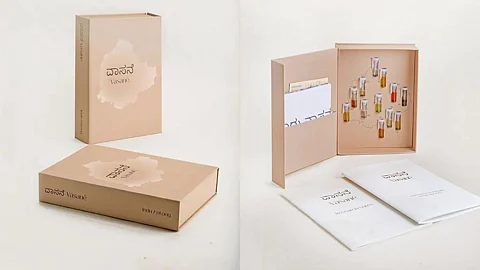
- HOMEGROWN WORLD
- #HGCREATORS
- #HGEXPLORE
- #HGVOICES
- #HGSHOP
- CAREERS
- ABOUT US
- CONTACT US

A place can be many things for a person. It can be home, but it can also be the place where you first found freedom in your life, or love, or just a place where you are forced to live for work. Having lived in Bangalore, it was all of these things and more for me. It was the first city I did an internship in, it was where I learned to live like an adult, and most importantly, the place that cemented my identity in many ways. And when a place leaves an indelible mark on your being, there are material or sensorial elements that are forever associated with it - a song, a dress, a smell, and certain people of course. While those may be personal associations, certain experiences are iconic of Bangalore - the pink flowers that line the streets in Summer, the taste of the dosa from MTR or the biting wind on your cheek as your wait for a cab on your way home after pub hopping, or the smell of filter coffee.
As a city whose identity and culture continue to be in flux and is multitudinous, there is not one smell it can be associated with. Vāsané is a limited edition book that is the result of the transdisciplinary artist Indu Antony’s intensive research, who has called Bangalore her home since the age of 21. The name of the book itself — Vāsané — means smell in Kannada. This well-researched ‘book’ that features 12 vials of iconic Bangalore scents - good and bad, an olfactory map of the city, a postcard and research notes, is the artist’s attempt to start a discussion and foster deeper engagement with the city through the senses. According to her interview with the Deccan Herald, in her attempts to put this book together, Indu interviewed over 200 people in three years and profiled 137 smells. She then worked with a third-generation perfume supplier to recreate the 12 final scents for the book.
The concept note for the book calls it a project that archives the smells of Bangalore. It goes on to say, “The city has a wide range of people who are invested in the smell industry but to turn their lens (or noses) to understand our everyday smells would be an interesting exercise. It will allow us to navigate the city via multiple smell profiles, creating an interesting perspective of its landscape. Anybody who enters a new city tries to connect to the city with their senses - this helps build a bond and a deeper sense of citizenship.”
As one of the most underrated senses, awakening the sense of smell within the context of the city could lead to a deep layer of engagement with it. From the smell of Sambar and Filter Coffee to Mysore Sandal Soap and Festival Market like Karaga to even the stench of toxic foam, garbage and the smell of burnt cigarettes thrown into puddles of water, the scents can evoke memories that range from childhood nostalgia, memories of friendships, a hard day at work and the worst of heartbreaks.
You can buy the book here.
If you enjoyed reading this, here's more from Homegrown:
How One Indian City Makes Perfume That Smells Like Rain
How A Bangalore Silent Reading Club Inspired 60+ Chapters of Its Kind Across The World
How Zarina Hashmi's Minimalist Art Intersects Identity, Memory, And The Idea Of Home
